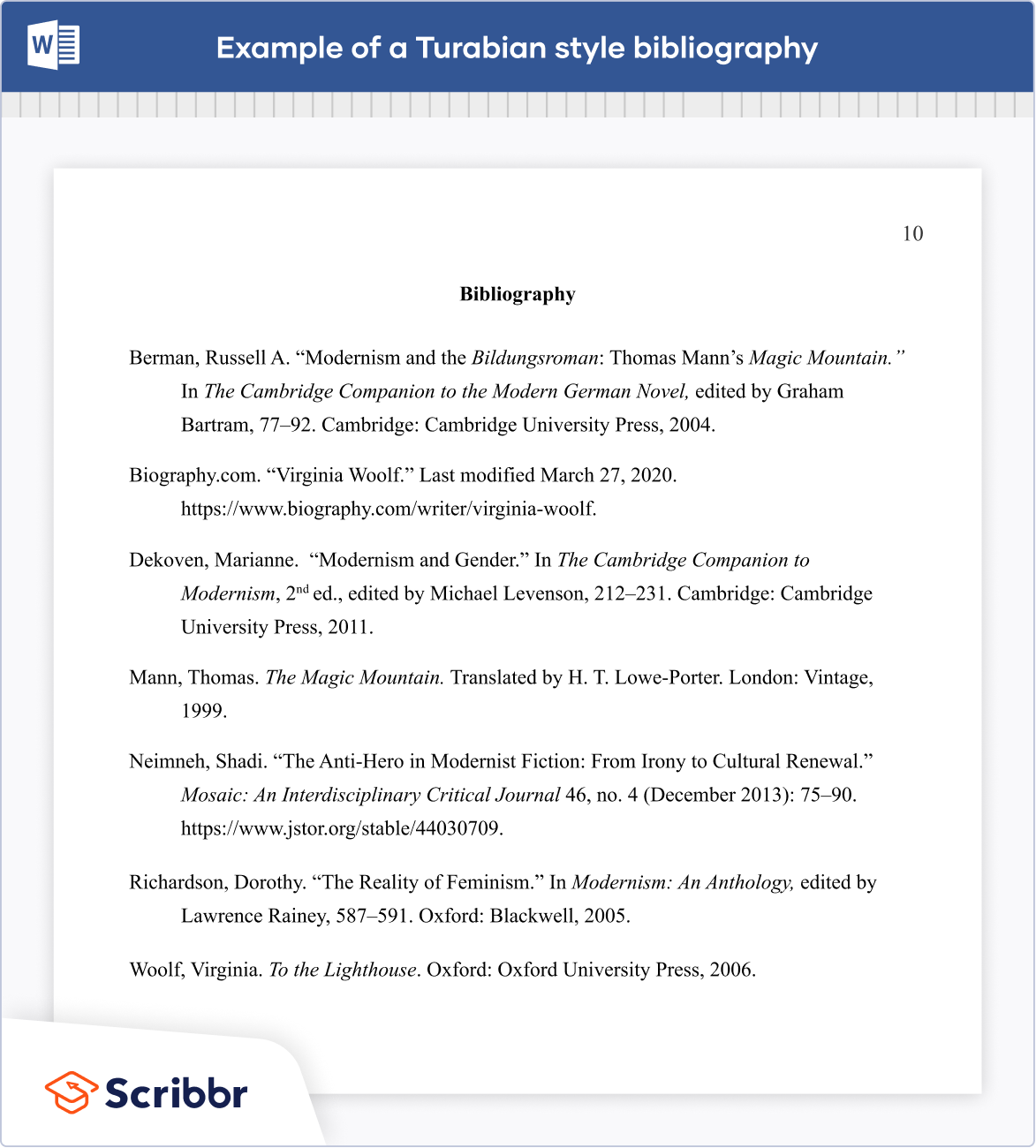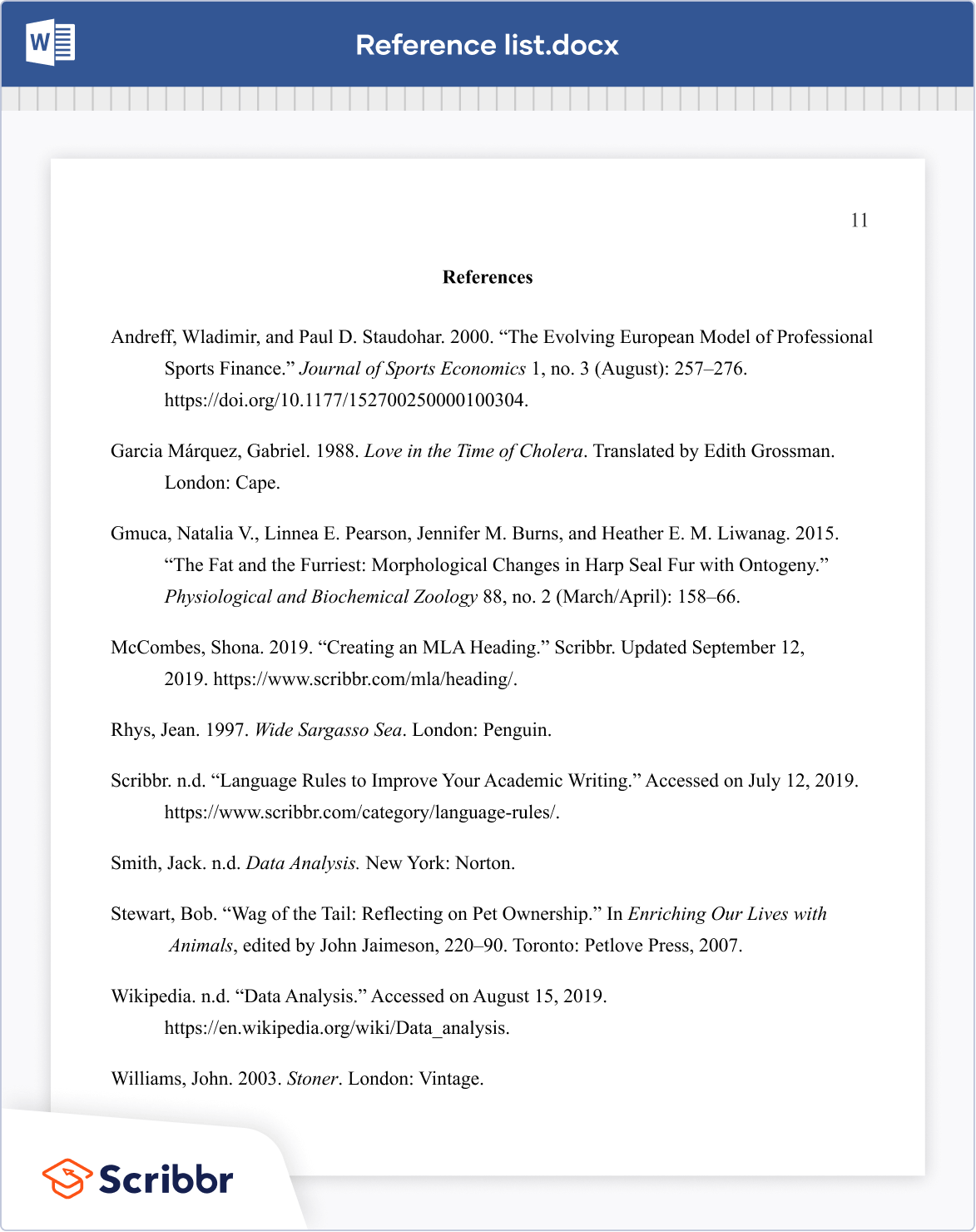Introduction to Turabian Style | Citations & Formatting
Turabian is a version of Chicago style that’s specifically designed for students and researchers. If you’ve been told to follow Chicago style when writing your academic research paper, thesis, or dissertation, it’s usually the Turabian guidelines that will be most useful to you.
What is Turabian style?
Kate L. Turabian published the first edition of A Manual for Writers of Research Papers, Theses, and Dissertations—often called “Turabian” for short—in 1937. The ninth and latest edition was published in 2018.
Where the Chicago Manual of Style is mainly aimed at publishers, Turabian is specifically aimed at students. Turabian is not a separate style from Chicago, but rather presents Chicago guidelines in a way that prioritizes student needs.
As such, Turabian differs from Chicago only in minor ways—formatting advice tailored to student papers, greater detail regarding specific citation formats—and the Turabian guidelines are the ones you should follow in your papers.
How do citations work in Turabian style?
Chicago and Turabian style both offer a choice between two citation styles: notes and bibliography, and author-date:
- In notes and bibliography style, citations appear in footnotes or endnotes, with a bibliography or annotated bibliography at the end listing all your sources in full. This style is popular in the humanities.
- In author-date style, in-text citations appear in parentheses, with a reference list listing all your sources at the end. This style is mainly used in the sciences.
Notes and bibliography style
There are two parts to a notes and bibliography citation: a Chicago footnote in the text, and an entry in your bibliography. You add a citation for all sources, whether they are primary or secondary sources, or tertiary sources.
Footnotes and endnotes
Citations in your text appear in footnotes or endnotes; the first citation of each source provides full information, while subsequent citations of the same source are usually shortened to save space.
A note is signaled by a superscript number appearing at the end of the clause or sentence the citation relates to. Footnotes appear at the bottom of the page, while endnotes appear at the end of the paper. Use one or the other, not a mix of footnotes and endnotes.
Each culture “erects its own musical signposts, melodic, harmonic, and rhythmic devices to represent emotion.”1
| 1. Jan Swafford, The Vintage Guide to Classical Music (New York: Vintage, 1992), 518. |
Bibliography
The bibliography lists full information on all the sources cited in your text. It appears at the end of your text. Bibliography entries are alphabetized by authors’ last names, so names are inverted in the bibliography with a comma separating them (e.g. “Smith, John”).
Each source is listed on a new line, with a hanging indent applied when an entry for a single source extends onto additional lines. An example of a properly formatted Turabian bibliography is shown below.
In the tabs below, you can explore examples of various common source types cited in Turabian notes and bibliography style. It’s always important to make sure you use credible sources.
Notes and bibliography citation examples
| Turabian bibliography | Author last name, First name. Book Title: Subtitle. Place of publication: Publisher, Year.
Swafford, Jan. The Vintage Guide to Classical Music. New York: Vintage, 1992. |
|---|---|
| Full note | Author first name Last name, Book Title: Subtitle (Place of publication: Publisher, Year), Page number(s).
1. Jan Swafford, The Vintage Guide to Classical Music (New York: Vintage, 1992), 518. |
| Short note | Author last name, Shortened Book Title, Page number(s).
2. Swafford, Vintage Guide, 345. |
| Turabian bibliography | Author last name, First name. “Chapter Title.” In Book Title: Subtitle, edited by Editor first name Last name, Page range. Place of publication: Publisher, Year.
Grundy, Isobel. “Jane Austen and Literary Traditions.” In The Cambridge Companion to Jane Austen, 2nd ed., edited by Edward Copeland and Juliet McMaster, 192–214. Cambridge: Cambridge University Press, 2011. |
|---|---|
| Full note | Author first name Last name, “Chapter Title,” in Book Title: Subtitle, ed. Editor first name Last name (Place of publication: Publisher, Year), Page number(s).
1. Isobel Grundy, “Jane Austen and Literary Traditions,” in The Cambridge Companion to Jane Austen, 2nd ed., edited by Edward Copeland and Juliet McMaster (Cambridge: Cambridge University Press, 2011), 195. |
| Short note | Author last name, “Shortened Chapter Title,” Page number(s).
2. Grundy, “Austen and Literary Traditions,” 211. |
| Turabian bibliography | Author last name, First name. “Article Title.” Journal Name Volume, no. Issue (Month or Season Year): Page range. DOI or URL.
Effland, Ann. “Small Farms/Family Farms: Tracing a History of Definitions and Meanings.” Agricultural History 95, no. 2 (Spring 2021): 313–330. https://doi.org/10.3098/ah.2021.095.2.313. |
|---|---|
| Full note | Author first name Last name, “Article Title,” Journal Name Volume, no. Issue (Month or Season Year): Page number(s). DOI or URL.
1. Ann Effland, “Small Farms/Family Farms: Tracing a History of Definitions and Meanings,” Agricultural History 95, no. 2 (Spring 2021): 315. https://doi.org/10.3098/ah.2021.095.2.313. |
| Short note | Author last name, “Shortened Title,” Page number(s).
2. Effland, “Small Farms/Family Farms,” 325. |
| Turabian bibliography | Author last name, First name. “Page Title.” Website Name. Month Day, Year. URL.
Bhandari, Pritha. “How to Write a Lab Report.” Scribbr. May 20, 2021. https://www.scribbr.com/academic-writing/lab-report/. |
|---|---|
| Full note | Author first name Last name, “Page Title,” Website Name, Month Day, Year, URL.
1. Pritha Bhandari, “How to Write a Lab Report,” Scribbr, May 20, 2021, https://www.scribbr.com/academic-writing/lab-report/. |
| Short note | Author last name, “Shortened Page Title.”
2. Bhandari, “Lab Report.” |
Author-date style
Author-date style consists of short parenthetical in-text citations that correspond to entries in your reference list.
In-text citations
Author-date in-text citations consist of the author’s last name, the year of publication, and a page number (or other locator) if relevant. They appear at the end of the relevant clause or sentence, before any closing punctuation.
Each culture “erects its own musical signposts, melodic, harmonic, and rhythmic devices to represent emotion” (Swafford 1992, 518).
Reference list
The reference list provides full information on all the sources cited. It is presented in a similar format to the bibliography, except that the year comes immediately after the author’s name, to allow for easy cross-referencing with the in-text citations.
Explore the tabs below to see examples of author-date citations for various common source types.
Author-date citation examples
| Turabian author-date format | Author last name, First name. Year. Book Title: Subtitle. Place of publication: Publisher. |
|---|---|
| Turabian reference entry | Swafford, Jan. 1992. The Vintage Guide to Classical Music. New York: Vintage. |
| Turabian author-date citation | (Swafford 1992, 518) |
| Turabian author-date format | Author last name, First name. Year. “Chapter Title.” In Book Title: Subtitle, edited by Editor first name last name, Page range. Place of publication: Publisher. |
|---|---|
| Turabian reference entry | Grundy, Isobel. 2011. “Jane Austen and Literary Traditions.” In The Cambridge Companion to Jane Austen, 2nd ed., edited by Edward Copeland and Juliet McMaster, 192–214. Cambridge: Cambridge University Press. |
| Turabian author-date citation | (Grundy 2011, 195) |
| Turabian author-date format | Author last name, First name. Year. “Article Title.” Journal Name Volume, no. Issue (Month or Season): Page range. DOI or URL. |
|---|---|
| Turabian reference entry | Effland, Ann. 2021. “Small Farms/Family Farms: Tracing a History of Definitions and Meanings.” Agricultural History 95, no. 2 (Spring): 313–330. https://doi.org/10.3098/ah.2021.095.2.313. |
| Turabian author-date citation | (Effland 2021, 315) |
| Turabian author-date format | Author last name, First name. Year. “Page Title.” Website Name. Month Day, Year. URL. |
|---|---|
| Turabian reference entry | Bhandari, Pritha. 2021. “How to Write a Lab Report.” Scribbr. May 20, 2021. https://www.scribbr.com/academic-writing/lab-report/. |
| Turabian author-date citation | (Bhandari 2021) |
Here's why students love Scribbr's proofreading services
Turabian formatting guidelines
Unlike the Chicago Manual itself, Turabian presents guidelines for formatting an academic paper, thesis, or dissertation. The following general format guidelines should be followed unless your university provides different ones:
- Use a standard font like 12 pt. Times New Roman.
- Double-space the text.
- Use 1 inch margins or larger.
- Indent new paragraphs by ½ inch.
- Place page numbers in the top right or bottom center.
The image below shows an example of a page formatted according to Turabian guidelines.
You can also download one of our template documents for Turabian style. Just select the citation style you need to follow; the appropriate formatting is already set up in the document.
Author-dateNotes and bibliography
Cite this Scribbr article
If you want to cite this source, you can copy and paste the citation or click the “Cite this Scribbr article” button to automatically add the citation to our free Citation Generator.
Caulfield, J. (2022, November 01). Introduction to Turabian Style | Citations & Formatting. Scribbr. Retrieved November 3, 2023, from https://www.scribbr.com/chicago-style/turabian/





